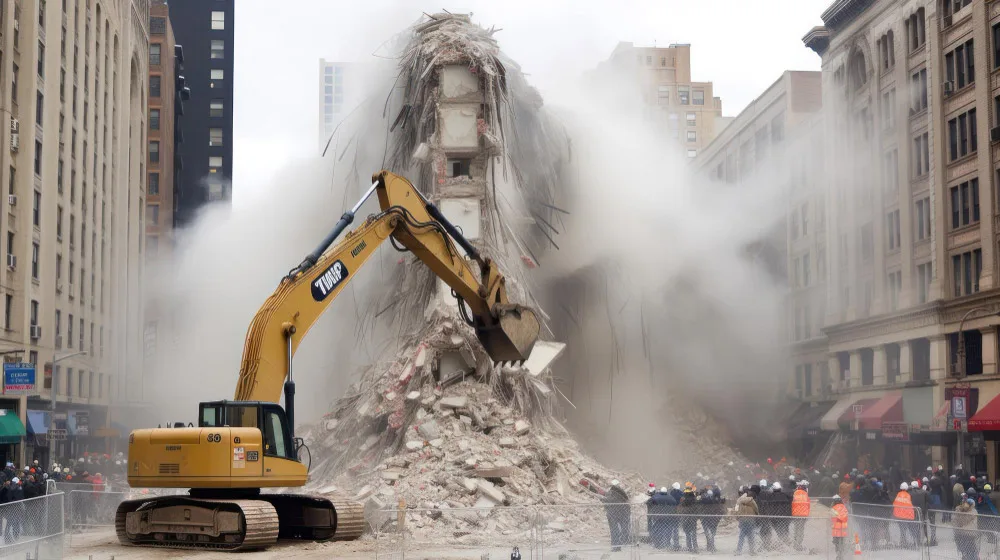
Demolition and excavation, where old gives way to new and progress is carved out from the earth. In this dynamic industry, technology has an essential role in reforming traditional methods and making processes safer, faster, and more efficient. This article will take you on a journey through the latest and current advancements in demolition and excavation, exploring how these technologies are enhancing efficiency, safety, and sustainability.
Excavation techniques have evolved significantly over the years, with innovative methods revolutionizing the way we approach digging and earthmoving tasks. One such technique is hydro excavation, which utilizes high-pressure water to remove debris efficiently. This method is not only precise but also minimizes the risk of damaging underground utilities.
Another groundbreaking advancement in excavation technology is the use of air excavation, where compressed air is employed to loosen soil instead of water. This technique proves especially useful in arid regions or areas with sensitive underground infrastructure.
Furthermore, trenchless excavation has gained popularity for its minimal disruption to the surrounding environment compared to traditional open-cut methods. By utilizing horizontal directional drilling or pipe bursting technologies, trenchless excavation allows for efficient installation or repair of underground utilities without extensive digging.
When it comes to demolition, the high-reach crusher method is a game-changer. This innovative technique involves using specialized machinery equipped with an elongated arm that can reach great heights to demolish structures efficiently and safely. The high-reach crusher’s ability to work from a distance allows for precision in taking down buildings while minimizing the risks associated with manual demolition.
The high-reach crusher method is particularly advantageous in urban areas where space is limited and nearby structures need protection from debris. By using this technology, demolition projects can be completed faster and with less noise pollution compared to traditional methods.
Additionally, the controlled dismantling process reduces the amount of dust and airborne particles released into the environment during demolition service. The high-reach crusher demolition method showcases how technology continues to revolutionize the construction industry by offering safer, more efficient, and environmentally friendly solutions for demolishing structures of all sizes.
The worker’s protection is prime, potential hazards are eliminated in the demolition and excavation process with the help of safety technologies. With advancements in technology, safety measures have become more sophisticated and effective than ever before.
One key safety technology is the use of drones for site inspections. Drones can provide real-time footage of the work site, allowing supervisors to identify any unsafe conditions promptly.
Remote-controlled machinery is another innovative safety technology that minimizes the risk of accidents by keeping operators at a safe distance from hazardous areas. These machines can be operated from a control room, reducing the need for workers to be physically present in high-risk zones.
Furthermore, virtual reality (VR) training programs have been implemented to simulate risky scenarios and train workers on how to respond appropriately in emergencies. By integrating these safety technologies into demolition and excavation processes, companies can prioritize worker well-being while increasing efficiency on-site.
In the field of demolition and excavation, advanced material sorting and recycling techniques have revolutionized the way construction waste is managed. These innovative methods not only aid in reducing environmental impact but also contribute to sustainable practices within the industry.
Complex technologies like optical sorting systems and magnetic separators enable efficient separation of materials. This process ensures that recyclable materials are saved and reused instead of dumbing says demolishers in Melbourne.
By implementing these modern techniques, demolition projects can significantly decrease their carbon footprint while promoting a circular economy mindset. The ability to recycle materials on-site or at specialized facilities showcases a commitment to responsible waste management practices.
As technology continues to evolve in this field, we can expect further advancements in material sorting and recycling processes. Embracing these techniques not only benefits project efficiency but also aligns with global sustainability goals for a greener future.
Virtual reality (VR) technology is revolutionizing the way demolition and excavation projects are planned and executed. VR allows engineers and project managers to simulate and visualize complex projects before any physical work begins.
Using VR headsets and controllers, stakeholders can walk through virtual construction sites, experiencing the scale, layout, and spatial relationships of structures. This helps identify potential design flaws or logistical challenges early on, saving time and resources. VR also enables the testing of different demolition and excavation techniques in a virtual environment, allowing for better planning and optimization of resources.
Additionally, VR can be used for training purposes. Workers can be immersed in virtual scenarios that simulate hazardous or challenging conditions, allowing them to practice safety precautions and improve their skills without any real-world risks. This enhances safety and reduces the learning curve associated with new equipment or techniques.
The demolition and excavation industry is also embracing sustainable practices to minimize its environmental impact. A significant focus is being placed on recycling and reusing materials generated from the projects.
Concrete, for example, is one of the most widely used construction materials, and its disposal can be a major environmental concern. However, advancements in crushing and screening technologies have made it possible to recycle concrete and use it as a base material for new construction projects.
Similarly, excavation projects generate large volumes of soil, which can be contaminated or unsuitable for reuse. Soil remediation technologies, such as bioremediation and soil washing, are being employed to treat and clean contaminated soil, making it suitable for reuse or safe disposal.

©2025 Red Raptors Pty Ltd, All Rights Reserved. Design by MakTal

We accept all major credit cards
